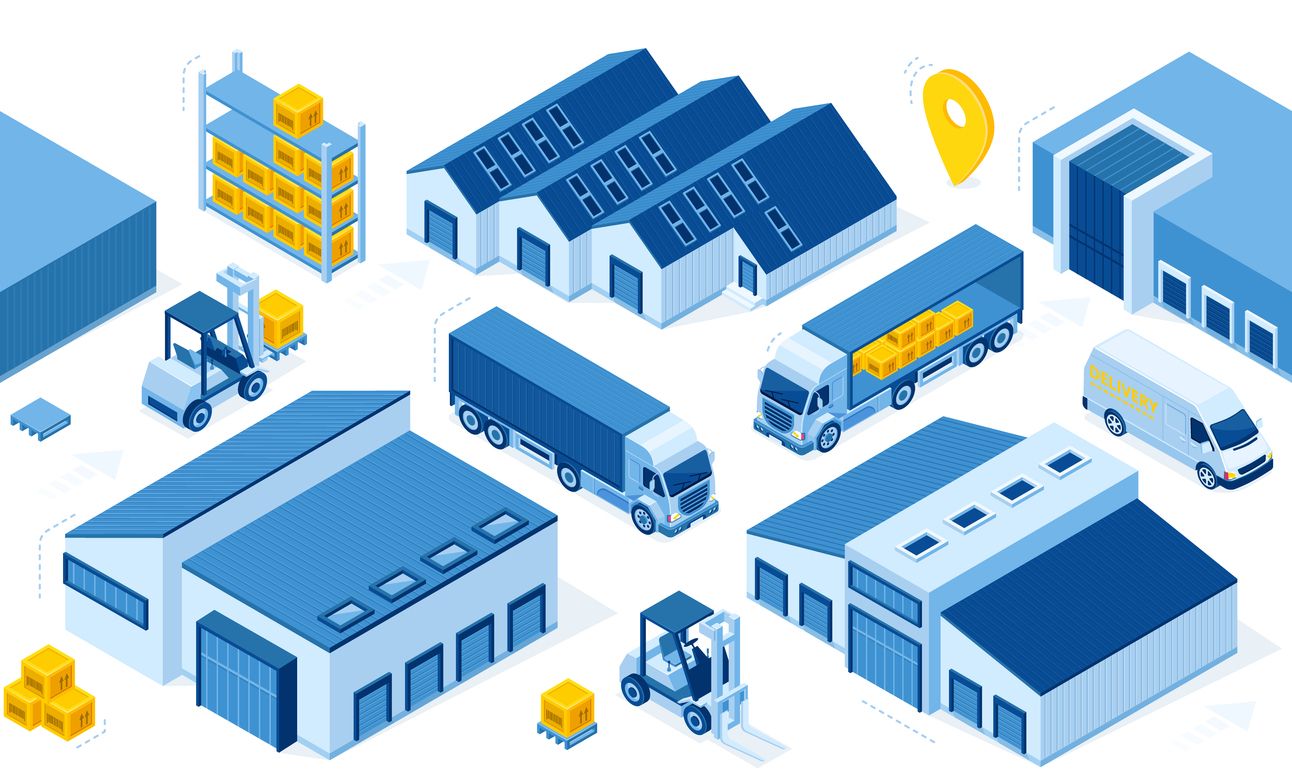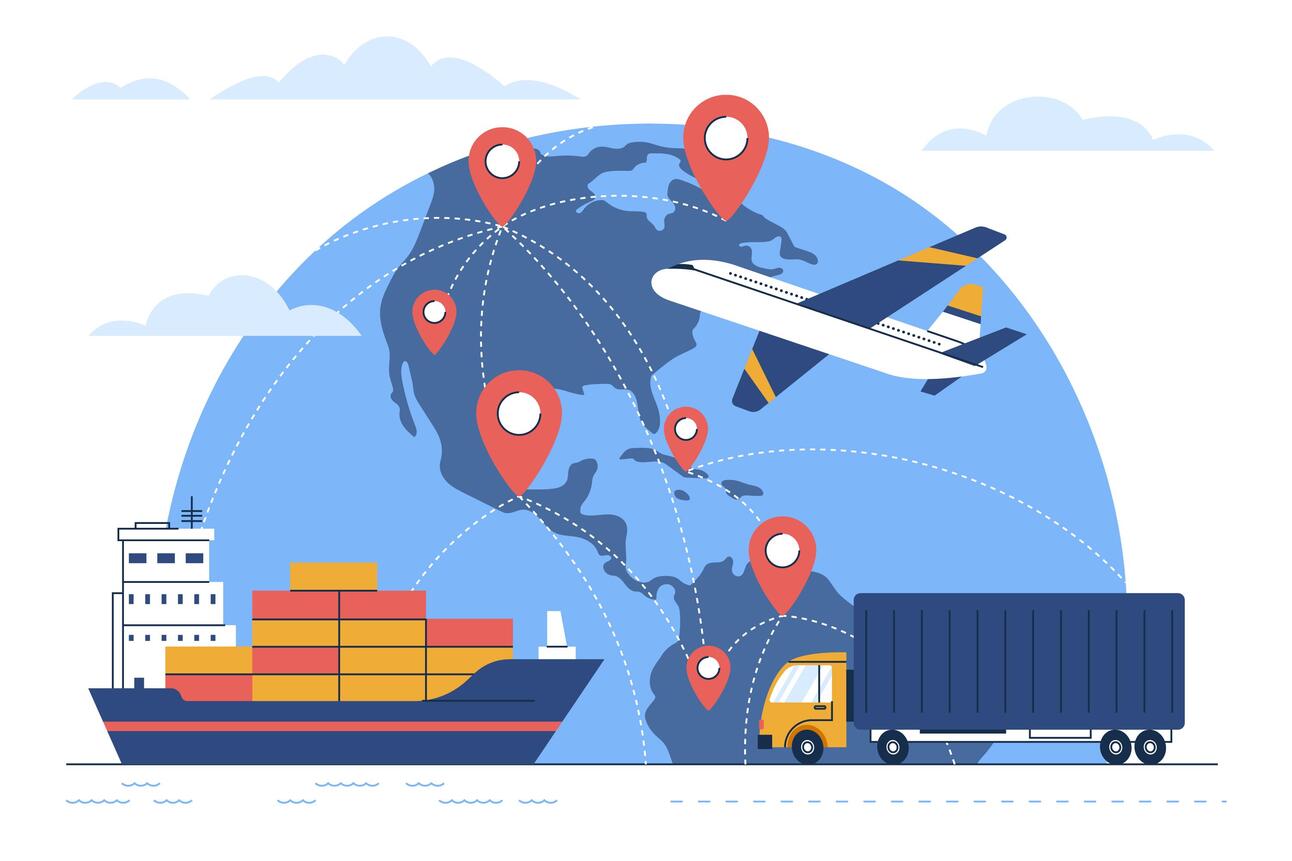- Warehouse Wisdom. Weekly.
- Posts
- Warehouse Wisdom. Weekly. 12/22/2023
Warehouse Wisdom. Weekly. 12/22/2023
Only the most relevant news for SMBs to improve logistics – picked, packed, and delivered without the bias.

Happy Friday!
We certainly hope you have all of your holiday shopping done, and that you end up getting everything you could have ever asked for this year!
Kind of like the Port of Long Beach, who received a whopping $283M gift this year from Uncle Sam to build “America’s Green Gateway,” a rail project which will enable the seaport to move more cargo by trains and thus reduce truck traffic and emissions. Or like GreyOrange Inc., who received a massive $135M in funding for its AI and robotics technologies. Okay, so maybe not quite like these, but we do hope you at least get that cool new product you’ve been yearning for.
This week, we delve into supply chain disruptions, including sagas at the Suez Canal, trouble at the U.S./Mexico border, and warehouse pollution police. So let’s jump into this week’s newsletter - the last before Christmas!
LOGISTICS VITALS
PANAMA PROBLEM CONTINUES TO COST TIME AND MONEY

The shipping industry has been navigating a Panama Canal crisis due to reduced water levels from an ongoing drought. The issues at the Panama Canal have the potential for longer-term disruptions than some of the other crisis mentioned in this week’s newsletter unless there is a significant period of rainfall anytime soon that can reverse the trend:
22 - the number of daily ships that can currently pass through the Panama Canal.
36 - the usual number of daily ships that can pass through the Panama Canal with the current drought and sea-level problems.
2 - the number of years until a technical solution will be put in place.
INBOUND CONTAINER FREIGHT
CARGO SHIPS ARE UNDER ATTACK IN THE RED SEA

Houthi-controlled militants from Yemen have attacked at least 10 international cargo vessels traveling in the Red Sea by missiles and drones the past week – causing a potential supply chain crisis right in the middle of the peak holiday season. The route under attack, which runs through the Suez Canal and connects Asia and Europe, accounts for around 15 percent of the world’s shipping traffic and 30 percent of global container traffic.
As a result, major international cargo carriers have begun diverting vessels around South Africa’s Cape of Good Hope instead – a much longer route. In fact, the less timely route is adding up to two weeks’ journey, or 30-40 per cent more time between Asia and Europe ports. According to some reports, 90 per cent of Suez Canal-bound container vessels are pausing or re-routing, which could remove about a quarter of the globe’s total capacity, and delay shipments.
On top of the delays, freight prices will be negatively impacted as well, with the Cape route costing a minimum of 10% more than the Suez Canal route. Not the best timing to say the least, but it’s not the only part of the world in supply chain turmoil to end the year...
RAIL FREIGHT
CROSS BORDER SHIPMENTS ARE PILING UP AT MEXICO BORDER

In the meantime, the US is suspending freight train crossings at two Texas checkpoints after videos have uncovered a flood of migrants riding trains to cross the border. The crossings, at Eagle Pass and El Paso, are the number 2 and number 3 rail gateways by volume. To give you an idea of the volume, Union Pacific and BNSF Railways interchanged an average of 16 trains per day via Eagle Pass in October, and an average of 7.3 trains per day in El Paso and handle 45% of the railroad’s U.S.-Mexico freight. Union Pacific says it placed an embargo on Mexico-bound freight moving on 60 trains.
And if things weren’t bad enough at the U.S.’s southern border, new data on cargo truck thefts are adding to the chaos. According to the most recent reports, the DAILY average for cargo thefts in Mexico during the third quarter was 56.7 incidents. The most stolen product types appear to be food and drinks, miscellaneous goods, and building and industrial materials, whereas the most significant increases have been found in the auto parts and pharmaceutical segments. As a point of comparison, total cargo thefts in the U.S. were 123 for the most recent entire QUARTER. For those of you ‘nearshorers’, this may be something to keep an eye on…
WAREHOUSE SPACE
WAREHOUSE BOOM IS OVER, BUT CALLS TO CURB POLLUTION ARE NOT

As we reported in an earlier newsletter, warehouse starts have been down significantly over the year. The latest results from data company CoStar shows that industrial property construction starts tumbled 48% in the first nine months of the year, and the dollar volume of industrial real estate sales fell by 45% in the third quarter, compared to a year earlier. But while many predicted the end was coming to a pandemic fueled run-up of construction to support e-commerce growth, what many didn’t see was the effects of the growth on local neighborhoods and the corresponding calls for the industry to curb pollution.
Studies are beginning to show that large industrial parks are elevating pollution levels of nearby neighborhoods, leaving communities bearing the brunt of freight pollution. A recent University of Washington study found that neighborhoods within two miles of Amazon’s “last mile” facilities (delivery stations and sortation centers) were exposed to twice as much traffic from delivery vehicles and trucks compared to other Seattle-based neighborhoods. While the likes of Amazon are not the only one to blame, it hasn’t started legislatures from mounting attacks across the country.
One such attack was mounted back in 2021 in Southern California, and apparently the results are showing positive. The South Coast Air Quality Management District (SCAQMD) enacted a new rules whereby relevant businesses were given a menu of 30 choices to pick from, such as acquiring zero-emissions trucks, installing charging infrastructure for zero-emissions trucks, installing solar panels, or taking actions to mitigate community health harms from truck emissions). For each action the business takes, they earn points towards a required total to follow the law. So far, SCAQMD estimates that collective actions taken have produced a 3% reduction in nitrogen oxide emissions from warehouses. Judging by the results, don’t be surprised to see something similar come to an industrial park neighborhood near you…
FREIGHT AND SHIPPING
THE ECONOMY MAY BE LOOKING UP, BUT FREIGHT IS IN A RECESSION

The U.S. freight market remains in a recession, according to the American Trucking Association (ATA). Truck tonnage, which measure the gross tonnage of freight transported by motor carriers in the U.S., decreased 1% in November. The decrease marked the ninth straight annual monthly decrease. Truck tonnage was also 1.2% lower than the same month last year.
Meanwhile, FedEx announced that its revenues will drop rather than stay flat, year-over-year, due in large part to reduced demand. And with the November Logistics Managers Index recording a reading of 49.4 compared with 53.6 a year ago, there is further evidence that the transportation sector is contracting. Experts conclude the reason behind the drop is wide-ranging selling off of inventories quickly and are optimistic that the freight recession will ease heading into 2024.
In fact, some companies, including Prologis, believe that the global freight recession will reverse - but with the newest challenges cropping up across the freight landscape, we’ll wait further until we get more optimistic news to make any definitive conclusions.
ONLINE MARKETPLACES
THINK TWICE ABOUT RELYING ON THOSE AI AMAZON REVIEWS

Reviews are big in e-commerce and can make or break sales for merchants on platforms like Amazon. And it’s no surprise that retail giants like Amazon are making use of AI to streamline the creation and updating of reviews on its platform. The only problem? Those good old-fashioned tech-cooked reviews are showing to be quite biased – towards negative reviews!
Some companies with as little as 1% of negative reviews are reporting that the bots have a pre-disposition to using a critical light in the summaries provided online. Other users feel that the artificial intelligence models are taking a handful of negative reviews and summarizing them like they’re a fully consistent theme.
Whether you land on the evolving tech side of the fence or not, it’s worth checking out your reviews and product descriptions on platforms that are implementing these new tools to make sure that the proper balance is being struck and that fairness reigns in your online feedback channels.
WAREHOUSE QUICK DELIVERIES
CONSUMERS DID THEIR PART THIS YEAR - JUST MAYBE NOT ON SUPER SATURDAY, AND MORE…
Holiday Sales Will Hit Expectations
But Fewer Consumers Will Shop on Super Saturday
Forward Air to Follow Suit with Competitors, Raise Rates
U.S. to Gather Semi-Conductor Chip Intelligence for National Security
2024 Will Bring Digital Shakeup for Supply Chains
U.S. Manufacturing Struggles to Climb Out of Recession
A Unique Take on Warehouse Worker’s Struggles
“The disruptions will disrupt the trend of diminishing global supply chain pressures, which had steadily fallen over the course of 2023. This relief has been key for helping reduce global inflationary pressures”